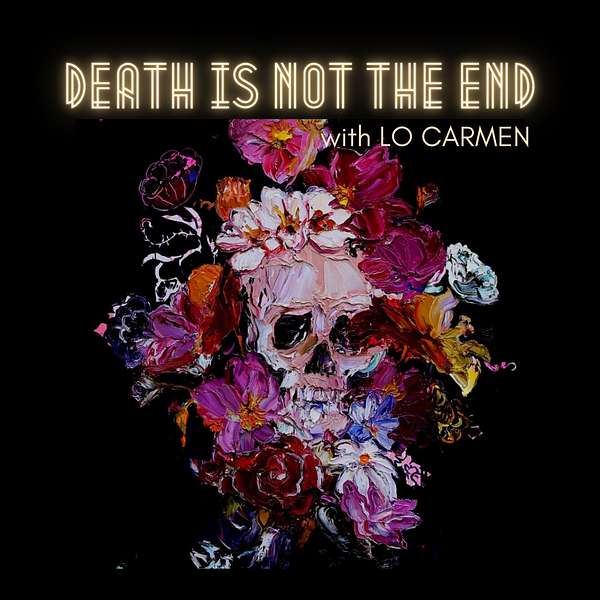
Death Is Not The End
Join host, singer-songwriter Lo Carmen, as she travels through the valley of death and emerges on the other side, exploring how we remember, eulogise and celebrate our loved ones, end of life navigations, mind-blowing death rituals and customs from all around the world , incredible innovations and futuristic options for after life planning, fascinating insights from Death’s door and examinations into the intersections of Art, Music, Life, Death and beyond. Artwork 'Surrounded By Your Beauty' by Craig Waddell. Original Theme Music by Peter Head. ©Black Tambourine Productions
Death Is Not The End
Your Body Is A Wonderland
Lo Carmen talks with Jackie Dent , journalist and author of “The Great Dead Body Teachers”, a book about whole body donation and the incredible world of human anatomy.
Follow Jackie here www.instagram.com/jackiedentwrites/
Buy The Great Dead Body Teachers
Thank you to Sam Shinazzi for recording a porch version of ‘Your Body Is A Wonderland’, originally by John Mayer, for this episode. More Sam Shinazzi here.
The Death Is Not The End Theme music composed, performed and recorded by Peter Head.
The Death Is Not The End sting is from the Bob Dylan song, also performed and recorded by Peter Head.
The repertoire on this recording is licensed by APRA AMCOS.
The artwork used on the podcast was created by Craig Waddell.
SOME USEFUL LINKS FOR BODY DONATION
Please note that you can generally find info for your country by searching 'how to donate my body to medical science' and finding links to the university nearest you.
AUSTRALIA
https://sbb.neura.edu.au/donors/brain_donor_programs
https://www.sydney.edu.au/medicine-health/industry-and-community/support-us/body-donations.html
https://medicine-psychology.anu.edu.au/partner-us/collaborate-us/body-tissue-donation
https://www.donatelife.gov.au/register-donor-today
USA
https://www.sciencecare.com/about-science-care
https://portal.braindonorproject.org
https://fac.utk.edu/body-donation/
CANADA
UK
https://www.hta.gov.uk/guidance-public/body-organ-and-tissue-donation/brain-donation
Death Is Not The End is created, wr
©Black Tambourine Productions 2025 ...
Visit Lo Carmen's Loose Connections newsletter here, for extra insights and community chats: https://locarmen.substack.com/ ...
Follow host Lo Carmen here:
https://www.instagram.com/locarmenmusic/
https://www.facebook.com/locarmenmusic
https://www.threads.net/@locarmenmusic
Follow Death Is Not The End here:
https://www.instagram.com/deathisnottheendpod/
https://www.facebook.com/deathisnottheendpod
The saying, dead men tell no tales, is not actually correct. After death, our bodies become a wonderland of possibilities. through organ donation and life-saving transplants, they can help keep someone else's stories alive. And through whole body donation for medical research and education, they can contribute to the greater good of humanity and help solve medical mysteries. Another saying is that donating your body to science is the greatest gift in the world because it helps endless people, endlessly. Journalist Jackie Dent had always been slightly perturbed and intrigued by the fact that her beloved grandparents had donated their bodies to medical science. And as time went on, she found herself wondering about their motivations. She also found dissection-related topics, people and items kept popping up in her life. Being both an exceptionally thoughtful person and an investigative journalist, Jackie pulled the thread of her curiosity and soon found herself writing a book, The Great Dead Body Teachers. And as she puts it in the opening paragraph of this book, She soon found herself in the middle of a massive production called What the Fuck Anatomy, a part drama, comedy, horror, science fiction, and Marina Abramovich concept piece. Jackie explored where few people dare to tread and has compiled the most incredible resource of information, both current and historical, about donating one's body, medical science, what it's given us and where we would be without it. She travelled the world, she spoke to researchers, scientists, students, doctors, educators, historians, you name it, she spoke to them and today we are going to speak with Jackie.
Jackie Dent:So it is a very mysterious space and I think people go, oh yeah, I can donate my body to science. But also the thing too is a lot of people get mixed up with whole body donation and organ donation. And I think that's why like on the first page of the book maybe I explain the difference because they are absolutely two different worlds.
Lo Carmen:My parents have always... wanted to donate their bodies and they've signed up. My dad specifically has always said that he wants to be studied for the effects of long-term marijuana use on the brain.
Jackie Dent:Well, you know, he should send his brain to the brain. I know that the University of Sydney has a brain, they want brains, but also you can't specify what you want as well. The anonymous stress again and again that, you know, you've got to hand over the whole body. You can't, say, oh, I just want my legs studied or my foot studied or my heart because it's quite a logistical exercise. Like they'll have, for example, you know, and every university is different, the way they deal with the dead, but they'll have like a project that they need a lot of knees.
Lo Carmen:Right.
Jackie Dent:And then they'll have a project where– you know, they're looking at specific things. So it's sort of there's a lot of planning that goes into it. So you can't just say, yeah, you can look at my heart or my marijuana brain. That's pretty interesting, isn't it? It is. It's a real mystery about what happens. And I think, you know, I spoke to a really fascinating anatomist in England, Claire Smith, who's actually written a book that's quite hardcore about and she goes into really graphic details about what happens and she believes that people are a bit, wear rose-tinted glasses about body donation. They have sort of romantic ideas about it because the reality is it is a pretty full-on thing. Like you will be chopped up and you will be, yeah, you will be studied and dissected and cut up into bits and, you know, that's pretty edgy. And... But, yes, I think that's the thing as well that triggered me to get more into it is that there's a lot of academic papers about anatomists, about students' feelings and how to study the knee and things that they find. But I guess because I've worked as a journalist for a long time, I just felt like there was a real gap in knowing what happened in the space. But I was also just really fascinated by all the characters that work in that space and how they feel about it, what it's like day-to-day learning literally working with death. And what did you find? Oh, look, I don't know if I could generalise because I feel like, you know, we're all different and all the anatomists are very different and some of them are very philosophical about it. And, you know, so I kind of was drawn to international anatomists that, you know, work on death more kind of philosophical areas about it. The thing that really shocked me, it was kind of a turning point when I was working on the book actually, is because you and I would think that the anatomy lab is just about death, right? Like it's all, there's just dead bodies there. But I spoke to an anatomist in New Zealand who said that it's only probably in the last couple of decades, in recent years, that the anatomy lab has actually become a place for students to learn about death. You know, like this is the reality of being a doctor is that people will die and you will have to look after the dead. And, you know, and I was like I would have thought death was there the whole time. But he said, no, it's like a new thing that we use the anatomy lab as a place to teach students to reflect on death. And, you know, another anatomist that I profiled, Goran, who's, you know, We've since become, you know, we talk now and meet up for coffees. He did a philosophy degree before he became an anatomist. And, you know, for him, he thinks that it is a very powerful place to think about life and death. But then there's other people that I met, sort of technicians that You know, they just see it as they're doing their daily work and they're chopping up bodies. And the most fascinating thing that's happened since the book that came out is that I've been getting kind of fan mail and meeting people who have been coming up to me at book events, and they're young women who are technicians. And also in the book I go out to a body farm, which is another place where you can send your body now for forensic research, and it's all women. So that's the thing that I found really fascinating is that women In terms of the carpentry of dissection, like chopping up and doing the dissection, it seems to be becoming a female profession, which I found super interesting and something that I want to follow up on.
Lo Carmen:It is fascinating, you know, especially with the whole death positive movement that has so many female fans.
Jackie Dent:Well, maybe because we give birth, like maybe we can give death. Yeah, we're just in touch with it all. Yeah, so yeah, there is definitely, I mean, a lot of, I know a few deathies in the death world and, you know, there's just a lot of women in this space.
Lo Carmen:Though mortuary science has traditionally been a male-dominated field, the demographics are rapidly shifting, growing from 5% female enrolment in mortuary schools in the 70s to 72% female enrolment in 2019. A Californian college reported in 2022 that their graduating class was 100% female, with a significant number of those graduates also identifying as Latina or Black. The rise of female morticians on social media platforms such as the wonderful Caitlin Doughty, Lauren the Mortician and really young 23-year-old Gen Z morticians Amber Berrios from the US and Sarah Broanda from Australia has helped to demystify the profession and attract a whole new generation of women. Rowanda told the ABC, the industry is full of young people at the moment, particularly young women, which I find pretty cool. Every one of the 11 newly qualified embalmers at the Australian Institute of Embalming National Conference in March 2024 was female. Women are reclaiming a role that they held historically before the mid-19th century, where the intimate role of death care was performed by women in family homes. This changed during the Civil War as embalming became more widespread so that soldiers' bodies could be preserved for the travel home to their families. Embalming required scientific training, which women were systematically excluded from, leading to the male domination of the funeral industry and the medical industry in general. Medical schools in the United States didn't start admitting women until around 1900, and it wasn't until after World War II that we saw the first female graduates from Harvard Medical School. But way back in the 1350s, a young woman in Italy Alessandra Ghiliani was assisting the famed anatomist Mondino De Luizzi at the University of Bologna as a dissector, even though this was against the laws of the church and the government at the time. She managed to attend medical school by dressing as a man and made discoveries about the pulmonary circulatory system that preceded the official accepted discoveries by researcher William Harvey by 300 years. It is believed that the church at It should also be noted that the anatomical world is becoming more open in general, perhaps more compassionate. which has been reflected in the ceremonies that have been held by universities thanking families and donors for their contribution to medical science.
Unknown Speaker:Beyond the realm of science, as I reflect on the significance of each and every donor, I'm reminded of the rich diversity of human experiences that weaves us all together. It is only through the hands-on experience without working with our donors that we truly grasp...
Lo Carmen:In your book, you talk about some of the kind of rituals that occur in universities where the staff and the anatomists thank the bodies or invite the families. to some kind of ceremony when they've finished. Could you describe that process?
Jackie Dent:Yeah, so it is a really fascinating development in anatomy. Body donation is a new development. It's probably only been around for the last hundred years before they used to use the bodies of criminals and people that died in mental hospitals. And in fact, actually up until the 80s in Australia, if you died in a mental hospital, you were potentially dissected, which I found pretty fascinating. So anatomy and dissection has always had this sort of kind of yucky air about it. And curiously, if you go through the old newspapers in Australia, if someone donated their body, there was an article about it. There's a whole section of the book where I look at the old stories around body donors. So what happened is that the anatomists had to meet You know, they realized that the families of body donors were feeling uncomfortable, like what's going on there? It is a very mysterious space. So they began in Britain. So what happens is that after, you know, the students are finished with the bodies, they now, and it's not all universities do it, but it is slowly spread across the world where they will have a ceremony where the students will talk about, you know, thanking for the gift of the body, the family members can go. During COVID, it was really hard. We couldn't go up to Queensland to a ceremony. And so my mum and dad and I watched a ceremony via Zoom. And it was really interesting, my dad's reaction. I mean, my dad's in his 80s and he said that at the end of it, he said, oh, you know, when did they start doing this? You know, like, why didn't anyone ever tell me about this before? You know, they just sort of took my parents' bodies and we just never really heard from them again. We just got the ashes. So I think it really is a way for, you know, the anatomists to send a message to the community that we care about the bodies and the donors. And it's a way for the community to learn a bit more about what actually happens and the appreciation that the students have. Yeah, I found that really moving reading that. That's one of the things in the book is that I wanted to make the dissection of my grandparents not so disgusting and so yucky and actually give agency to the dead and give agency to the dissected because they're kind of these lost characters in history.
Lo Carmen:Yeah, and meaning and respect, it's... I think it's really important and revealing research that you've done and I feel like it should be required reading.
Jackie Dent:Would you donate your body?
Lo Carmen:No.
Jackie Dent:No, it's interesting and how come?
Lo Carmen:Because I want to be a record.
Jackie Dent:Oh, right, okay. Oh, great, okay, that's interesting.
Lo Carmen:Yeah, I just, I don't know, I like novelty things.
Unknown:LAUGHTER
Lo Carmen:The other thing that I was especially moved by was your description of where the soul resides. Could you talk a little bit about that?
Jackie Dent:Yeah, so that, I mean, it's a really interesting thing, isn't it? I don't know, are you a religious person?
Lo Carmen:No, I'm not religious and I don't even know if I believe in souls like I kind of do on a creative level. I don't know. in reality if I do or not.
Jackie Dent:Yeah, so I'm probably the same. Like it's sort of and so, you know, it became this very interesting thing about like why don't I want to donate my body? Like it's because I'll be dead. You don't want to be cold. Yeah, I don't want to be cold. I go on about that a bit too much in the book probably. But, yeah, so it was a very interesting thing. It was like, well, obviously I believe in some sort of afterlife and, you know, this whole issue of the soul has really plagued the anatomy lab for decades Well, and still does, the fact that, you know, the body, what is the body? What is a corpse? And, you know, Leonardo da Vinci, I found incredible, spent 30 years trying to find where the soul was and he identified it at the base of the back of the neck. How
Lo Carmen:did he come to that?
Jackie Dent:Well, he read a story that apparently when Alexander the Great, or was it Hannibal, wanted to kill an out-of-control elephant, they would spear it in that spot in the back of their neck there. So I think for some reason he– so there's a famous drawing actually of where Leonardo, he points this is where the soul is and it's sort of in the base of your skull area. But, yeah, even today there's a lot of research that says in some anatomical papers about how the idea of the soul really impacts on students. But also it's why in many parts of the world, we do now have an international corpse trade because there's countries, particularly in Middle Eastern countries, places where because of islam they can't you know people just aren't donating bodies and so you have a big trade out of america india and the philippines i didn't go into it too much into the book because it's like a whole other football field of rabbit holes but and it you know it requires quite serious investigation but yeah i mean the idea of of the power of the body and you know what happens to the soul afterwards definitely is a reason why people don't donate, but also is a reason why students can get quite upset. And I found it really interesting that people attach certain meanings to different parts of the body, like the heart and the brain have more meaning than like a kidney. So students felt a lot of intense feelings about brains. Actually, the anatomists do talk a lot about the brain. I think the brain is a pretty weird... I've watched a lot of videos of brains now and It's really gloopy actually. I thought it was much firmer but it's actually like very soft and cloudy. Like it's sort of so, yeah, there's a lot of politics and spiritual elements around dissection and the soul definitely was like a character that kept coming up.
Lo Carmen:Yeah, it's so fascinating how in different kinds of cultures people the belief of how long the soul resides in the body after death before it's gone. Like, you know, in Irish culture, you have to stay with the dead body for three days because that's how long it takes for the soul to separate. There's, you know, various thoughts in various cultures that are all quite different and I just find that quite interesting at what point the body just becomes a shell and no longer holds all of those ideas that a human being is made up of. Without dissection and the study of our bodies, where do you think we would be today?
Jackie Dent:Well, I think that's the thing that really, the one thing I just came to realize is that the You know, people find it really gross that I've written this book about dissection. Well, you know, it's not a lighthearted topic, is it? Like I'm not doing a thing on motivational, you know, how to lose weight. You know, it's like it's a pretty edgy topic. But the thing is it's the reason a lot of us are here. Like it's the back room of medicine. It's like, you know, if you pull back a curtain in a theatre and behind you see all the actors and the costume makers and, I mean, this is the back room of medicine is dissection and prosection.
Lo Carmen:Yeah.
Jackie Dent:you know, every weekend in Sydney, across Australia, across the world, there are doctors practicing on corpses. And it really is a, you know, an intrinsic part of, the word that came up for me was, that people told was haptic. So haptic is learning through touching. So you actually do it with your hands and, you know, it's how you learn it. And So there is sort of a shift in anatomy where people, there's all this amazing software. So I went to this London conference and it was quite spectacular, you know, the computer imagery and there's this thing called the anatomage table. I don't know if you've gotten up to that section in the book yet where I go to this conference in London and meet all these international anatomists but there's this anatomage table, you know, and it's like you flick through it. The software is amazing and so, you know, some universities argue you can just get by on the software but it wasn't until I actually ended up going to a surgical workshop in Sydney and seeing on the Saturday it was all heads that were being dissected and then on the Sunday it was head and neck with ENT training surgeons, that's when I realised, wow, like they need to get in there and they need to learn the map of the face and it's through touching the skin and getting in there that you, I mean of course a dissected a person, you know, a body donor is embalmed. So it's not, it doesn't have that vitality and wildness that, you know, when a surgeon's doing an operation, but you could really see that by touching the body and learning the three-dimensional that these doctors were learning. And I think I made the point in the book, it's like being a writer. It isn't until you've actually experienced something that you can really write about it. And it was seeing that dissection workshop over that weekend it was very confronting for me because I'm like super squeamish and I thought I was gonna like freak out but it wasn't until then that it all just sort of came together going out to the forensic facility in the Blue Mountains and seeing I went out there twice and seeing the scientists at work and seeing all the bodies out there and the police and what they were doing you know it was pretty uh Yeah, you can see that these donors are actually, yeah, they totally are contributing to research. Forensic
Lo Carmen:Anthropology Research Labs, more colloquially known as Body Farms, are outdoor sites where decomposing bodies can be studied in a range of environments and circumstances to help advance scientific knowledge and solve crimes. The first body farm was founded in 1987 by anthropologist and human decomposition research pioneer William M. Bass at the University of Tennessee in Knoxville. As of 2023, there are currently eight body farms across the US. One in Canada, one in Australia, with another one in progress, and one in the Netherlands. Donated bodies are used for multiple studies. As they break down, changes are observed and documented that can be accessed by researchers around the world, helping to improve methods of identification and time of death determinations. These environments provide unique learning opportunities for law enforcement Thank you. also helping to stop mistakes being made in evidence recovery that could render cases useless in court. The Australian Federal Police conduct disaster recovery training for mass casualty events like plane crashes and bombings using real cadavers so that they're more equipped and prepared when faced with the real thing. Other studies include examination of insects and bacteria and decomposition in various surroundings, including out in the open in shallow or deep graves, in cars, covered in plastic, in concrete, in extreme heat or cold climates, all helping researchers learn more about determining time of death. Further research projects examine whether fluids produced by decaying bodies affect the surrounding plant material, how medications affect decomposition, the impact of animal scavengers, infrared and drone detection, cadaver dog training. At the University of Tennessee, where decomposition is complete, which generally takes a year or so, the skeletons become part of the Bass Donated Skeletal Collection, a database available to researchers in the US and globally using 3D imagery. It's been estimated that the University of Tennessee was responsible for the education of at least quarter of the board-certified forensic anthropologists in the United States. A representative from the university said, The ultimate goal is to learn the numerous things that can happen to bodies in various contexts. So when our scientists need to testify in court, all of these variables have been studied and it's not just conjecture. That's what really drives us, the data, the science and the reliability of testimony. Among the donors are police officers, service members, healthcare professionals and teachers. A representative from the university also says they feel this is a way they can still be teaching after they're gone. Apparently pre-donors to body farms tend to be very enthusiastic. Many have an interest in forensic science and in helping the criminal justice system. Sometimes it's because they or somebody else they know has been a victim or has otherwise been affected. Some universities host events for pre-donors where they meet forensic anthropologists and get to tour the labs. Within 24 hours of a donor's death, Their body will be taken to the mortuary at a university and 12 hours later they will be on the body farm where they will go on to contribute to some world leading research. Professor Shari Forbes, responsible for establishing the 2016 body farm in rural New South Wales as well as the body farm in Quebec where she is currently working says we are forever indebted to the donors and their families. We understand that it's an unusual Thank you. A person who wants to donate their body must provide written consent before their death. Alternatively, the senior available next of kin is able to provide consent in writing after death if the deceased had not during their lifetime expressed an objection. I'm sure there's different rules in every country, so you will need to research what is pertinent to you. I heard Shari Forbes talking about how important it was to her to help families dealing with children or loved ones that had been murdered or lost to the elements in some other way, that that was kind of what was behind the idea of the facility of studying decomposition in natural surroundings and to help advance that kind of forensic research.
Jackie Dent:There's actually some quite interesting critiques of these facilities as well where the fact is people wonder how effective the science is because And you replicate every... Yeah, like you die in different circumstances. Like, you know, if you die in the Canadian Rockies compared to dying in Western Sydney, the way the body decomposes is very different. So I found that kind of interesting that there is some debate around... the worthworthiness of the science.
Lo Carmen:But I guess if there was more of these facilities all around the world and they all shared research, then that would be the ideal.
Jackie Dent:Well, the thing I found really incredible about the facility actually was just how beautiful we are when, I mean, it was confronting, but just at the point the colours of the bodies were exactly the same as the bush. It was like a Frederick McCubbin painting and, you know, the browns and the greens and the mould and, you know, it was really quite beautiful actually how we just sort of mould into the exact same colours of the bush. Yeah, so I had some pretty like kind of cosmic, the first time I went to the body farm that night I had like really intense dreams and, you know, obviously my brain was sort of really trying to flood out and wash around What I'd seen
Sam Shinazzi:Your body is a wonderland Your body is a wonderland I'll use my hands Your body is a wonderland
Jackie Dent:I just kept thinking, going back to this idea of we are in the world. Do you know the feminist philosopher Val Plumwood?
Lo Carmen:No, I don't.
Jackie Dent:Right. She's a very important Australian feminist eco-philosopher. She died, but she had this incredible experience where she survived a crocodile attack. She wrote this famous essay that you should read. She's since died, but she was at the forefront of eco-philosophy and talked about how humans are have this arrogance about you know we think we're better at the top of the food chain but you know like when i went out to the body farm and saw the way that we are when we dissolve into the world uh i could really see what val was talking about you know that we are in it you know there's this sort of ashes to ashes you know worms and gases you know we are quite elemental so
Lo Carmen:99% of the mass of the human body is made up of six elements. Oxygen, carbon, hydrogen, nitrogen, calcium and phosphorus. Although we contain detectable traces of around 60 chemical elements. With most of these elements needed for life also commonly found in the Earth's crust. The adult human body is composed of around 53% water. The rest is proteins, fats, DNA, hydroxyapatite, carbohydrates, ions and gases, or in more recognisable terms, muscle, fat, bone, teeth, tissue, nerves, hormones, fluids, gas and air. Despite the fact that we are all fundamentally and elementally the same, Learning to navigate and understand how our endless individual quirks and differences work is what makes the act of donating a body to medical science such an important, valuable and generous act at no cost to you because all the science indicates you won't be there. We'll go deeper into the life-giving importance of organ donation in another episode, but let me take this opportunity to stress that we should all register as organ donors, unless, of course, you have a particular cultural issue with it. All major religions, including Christianity, Islam, Buddhism, Hinduism and Judaism, support organ and tissue donation, and donation specialists can help your family to support your religious and cultural requirements. One organ donor can save the lives of up to seven people but only around 2% of people who die in Australian hospitals meet the criteria required to be an organ donor. If you are able to be an organ donor, your body can still be donated to medical science afterwards. Advanced planning is important for making body donations, whole body donations. Please make sure that the people close to you know your wishes and that you've registered your intent. This will not only ease the emotional stress for those that love you at the time of death, but will ensure that your body donation will provide the greatest value to science and to patients in the future. There are other bonuses. Donating your body means there will be no cost for your cremation or disposition, which is why it has often been a popular and practical choice for those of us less financially secure. And there will likely be a lovely service and gratitude ceremony provided by the university or facility your body is donated to, quite possibly with string quartets, speeches, sandwiches and flowers. All that and... You're helping humanity. Something to think about, isn't it? Thank you so much to Jackie Dent for sharing all those fascinating insights. And honestly, her book, The Great Dead Body Teachers, is a wild and fascinating ride through historical and modern anatomy and science. Funny with a beating personal heart. Our conversation was lightly edited for clarity and time. Death Is Not The End was written, recorded and edited by me, your host, Lo Carmen. If you'd like to talk about things we've discussed today, please head to locarmen.substack. and we can get into it there. Further details and links for things we talked about today are in the show notes. Thank you to Sam Shannazzi for recording a porch version of Your Body is a Wonderland, originally by John Mayer, for this episode. The Death is Not the End theme music was composed, performed and recorded by Peter Head. The Death Is Not The End sting is from the Bob Dylan song, also performed and recorded by Peter Head. The repertoire on this recording is licensed by APRA AMCOS. The artwork used on the podcast was created by Craig Waddell. Death Is Not The End is a Black Tambourine Productions production. Please do rate and review the show wherever you listen. If you enjoyed our episode today, it really helps other people find it. And see you on the other side.
Sam Shinazzi:And if you want love, we'll make it swim in the deep sea The blankets take all your big plans and break them. This is bound to take a while. Your body is a wonderland. Your body is a wonderland. I'll use my hands. Your body is a wonderland.
Podcasts we love
Check out these other fine podcasts recommended by us, not an algorithm.
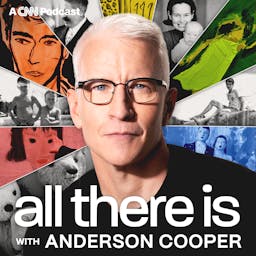
All There Is with Anderson Cooper
CNN Podcasts
Hidden Brain
Hidden Brain, Shankar Vedantam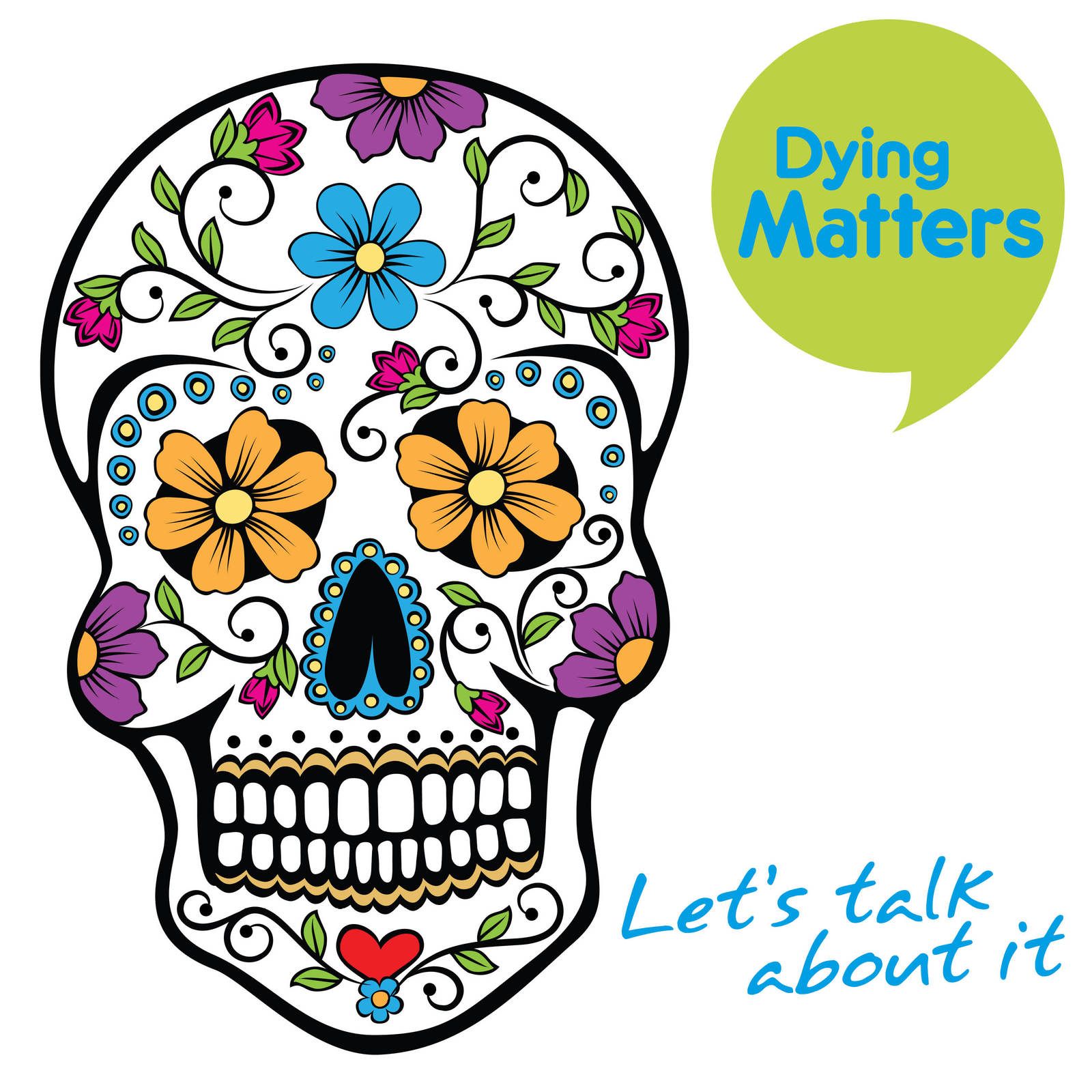
The Dying Matters Podcast
The Dying Matters Podcast
The Art of Dying Well
The Art of Dying Well
Death in the Afternoon
The Order of the Good Death
Dolly Parton's America
WNYC Studios & OSM Audio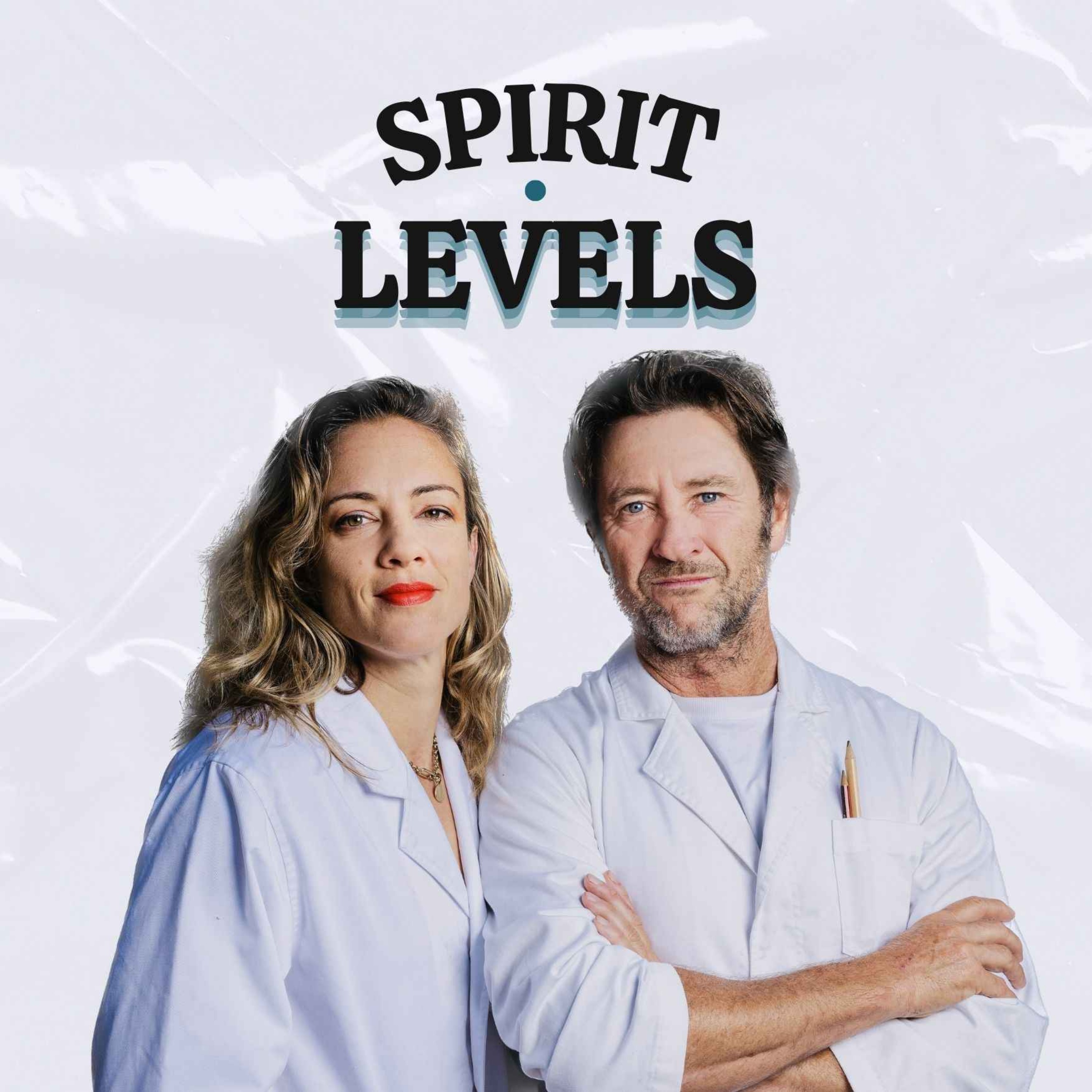
Spirit Levels
Jenny Valentish and Frank Magree
Listen Carefully with Nathan Jolly
Listen Carefully
Music Mothers and Others
2SER 107.3FM
Are You Still Working?!
Presented by Courtney Collins & produced by Lisa Madden
Cocaine & Rhinestones: The History of Country Music
Tyler Mahan Coe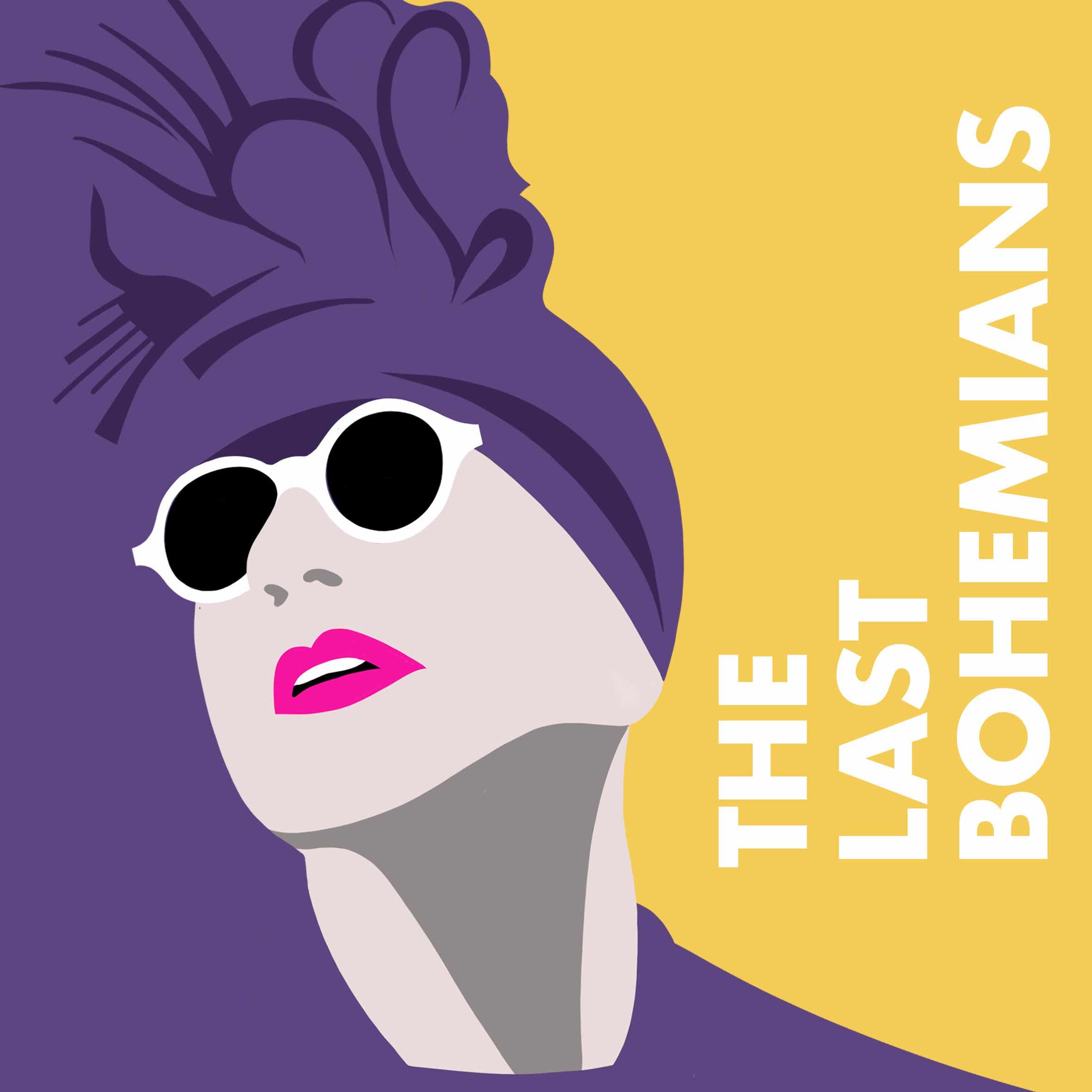
The Last Bohemians
House of Hutch
My Favorite Album with Jeremy Dylan
Jeremy Dylan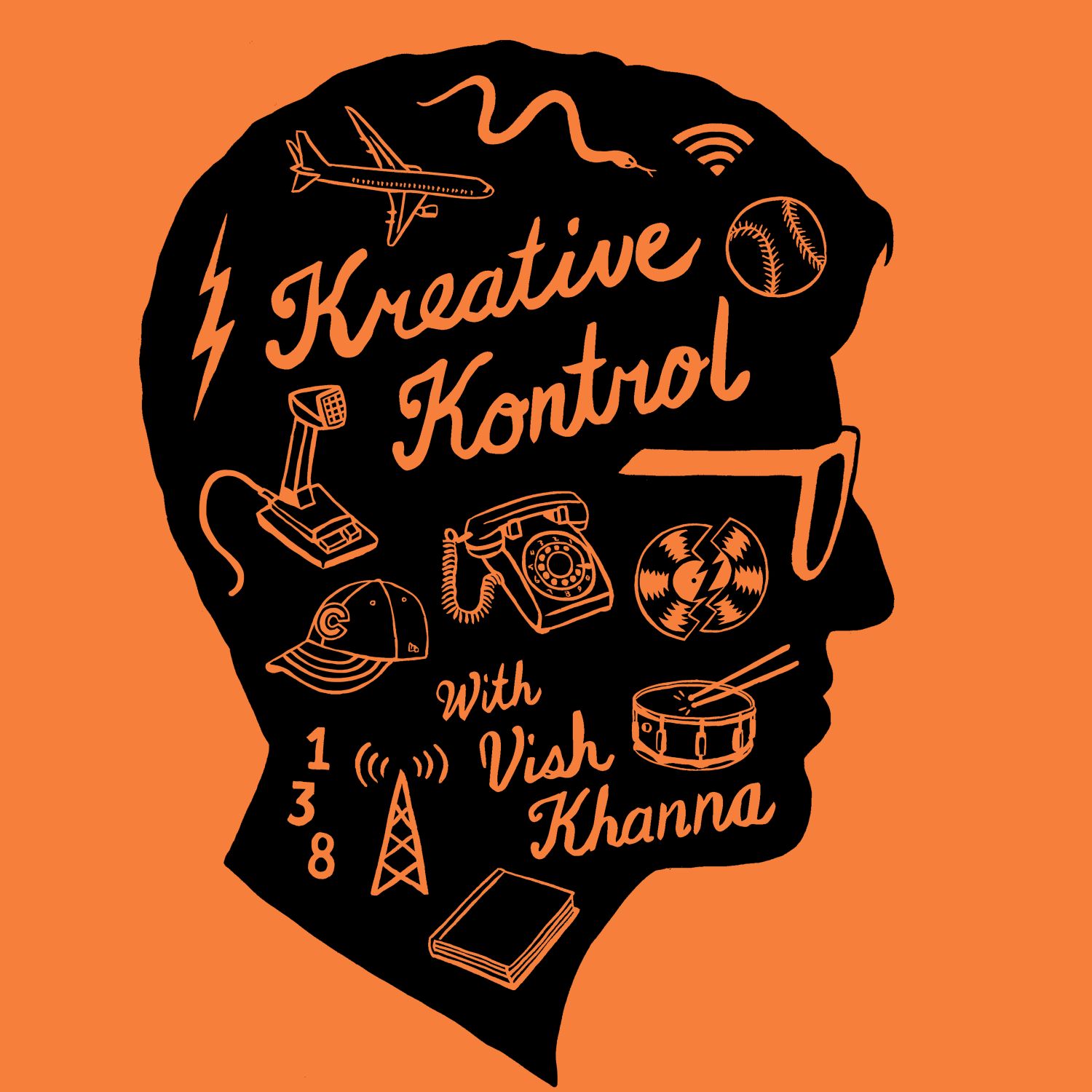
Kreative Kontrol
Vish Khanna / Entertainment One (eOne)
Runaway Horses
Sonos
Marieke Hardy Is Going To Die
Marieke Hardy

